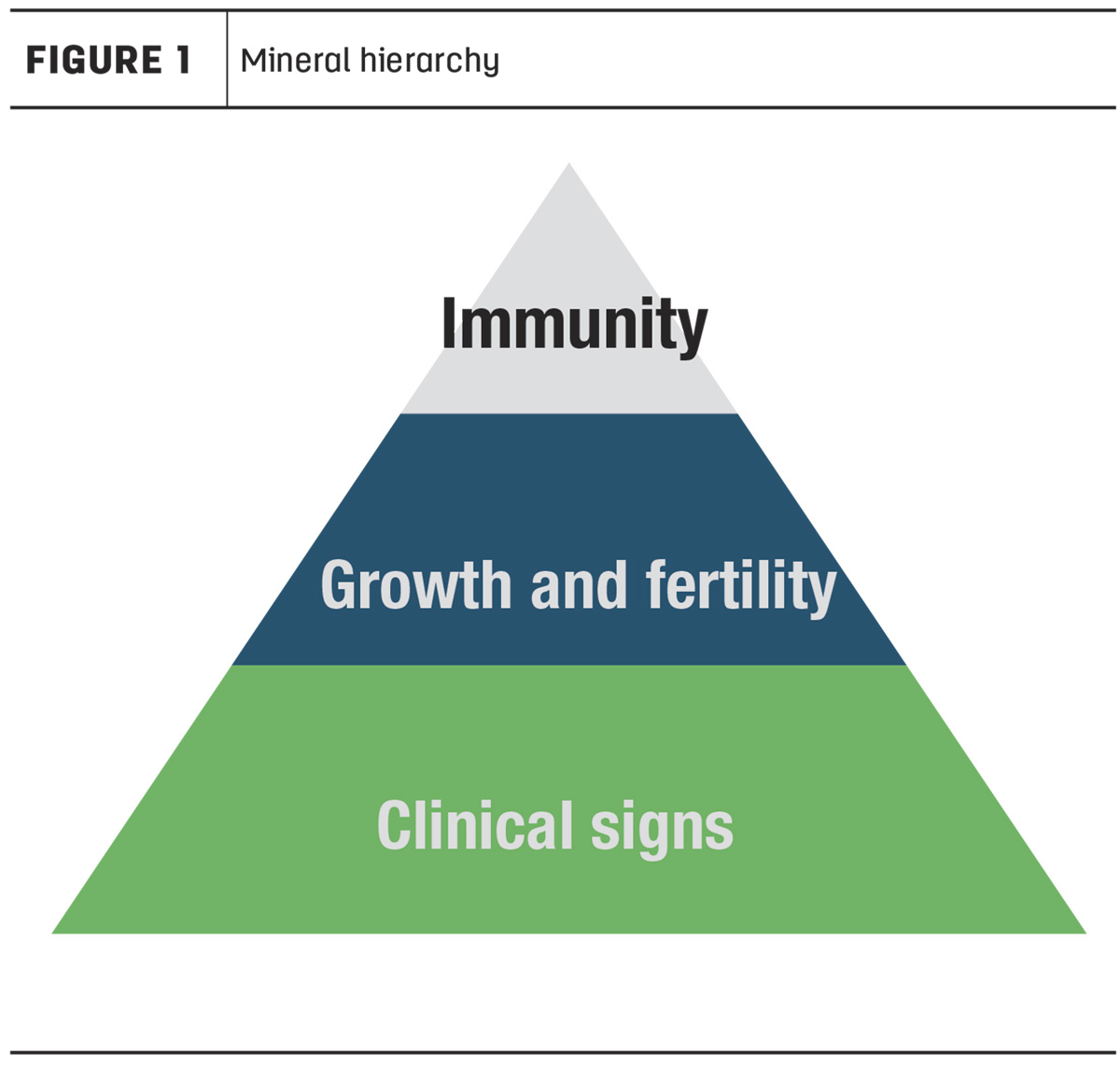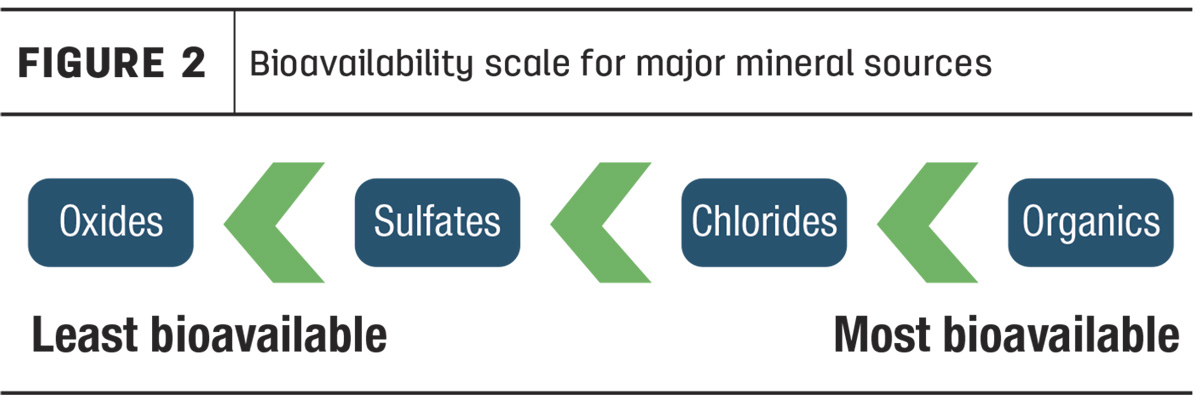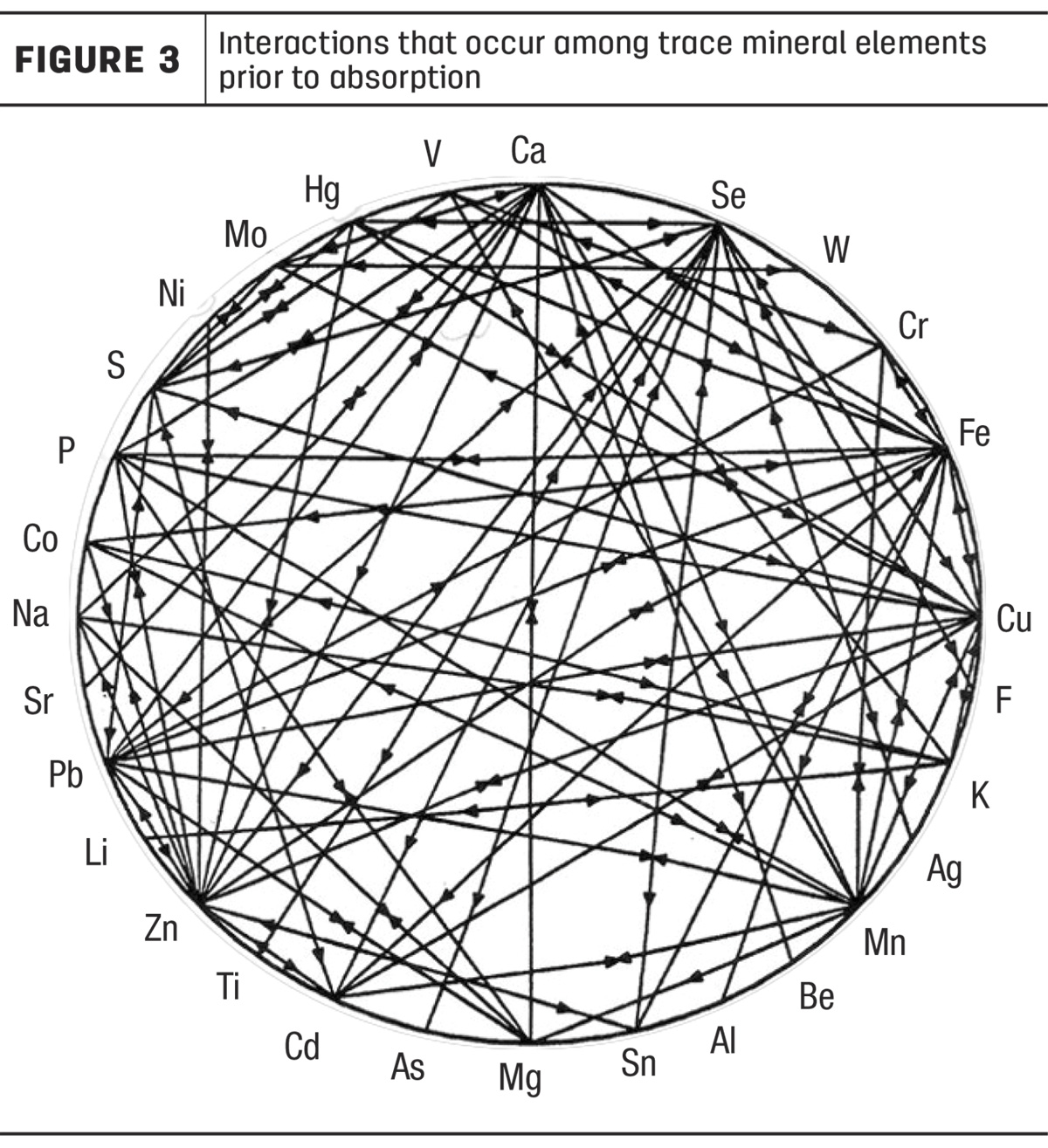From source and quality to concentration and bioavailability, trace minerals offer many characteristics – and each can affect animal health and nutrition outcomes.
A better understanding of trace mineral characteristics is instrumental in improving animal performance, reducing environmental impact and improving return on investment – all of which will improve your herd’s success in the dairy industry.
What should I understand about minerals before formulating a dairy diet?
Mineral hierarchy
It is important to understand the mineral hierarchy and how it applies to feeding trace minerals. If clinical signs of mineral deficiency are observed in your herd, it is important to understand that the animal’s growth, fertility and immunity have already been negatively impacted.
As we formulate our dairy diets, it is important to ensure that trace mineral requirements and needs are adequately met for all parameters of the mineral hierarchy (Figure 1).

Required vs. response minerals
Required minerals are considered essential nutrients we formulate into the dairy cow’s diet. For example, zinc (Zn) is supplemented in dairy cattle because it is required for cow reproductive success.
Response minerals are considered additive ingredients not required by the cow. Unlike required minerals, response minerals usually help elicit a performance response when added to the diet. A good example of a response mineral is chromium (Cr). When added to the diet, Cr may cause an increase in milk yield response.
Both required and response minerals are often supplemented using trace mineral premixes (TMP) or vitamin-trace mineral (VTM) premixes as part of the total diet. Once you understand the distinction between required and response minerals, it is important to understand the characteristics of each trace mineral being fed.
How does mineral source impact the animal and diet?
Organic vs. inorganic mineral sources
Minerals are involved in numerous biological functions. The type of mineral source being fed is impacted differently by the antagonistic properties of other compounds within the diet. The varying degree to which different mineral sources react in the presence of antagonists can significantly impact the bioavailability of the mineral.
Bioavailability of trace minerals is highly dependent on the mineral source. Inorganic minerals have been deemed less bioavailable than organic minerals. Figure 2 illustrates a bioavailability scale for the major mineral sources.

In general, it is important to understand the following regarding mineral source:
-
Inorganic mineral sources are less bioavailable than organic mineral sources. Inorganic mineral sources include oxide, sulfate, carbonate and hydroxychloride. Hydroxychloride minerals are classified as inorganic but perform as a hybrid between the inorganic and organic trace minerals.
- Organic mineral sources are more bioavailable but are not all created equal. There are currently seven approved definitions for organic minerals, as outlined by the Association of American Feed Control Officials (AAFCO). Those include metal (specific amino acid) complex, metal amino acid complex, metal proteinate, metal amino acid chelate, metal polysaccharide complex and zinc propionate.
Mineral properties
Manufacturing of inorganic and organic trace minerals requires a high level of expertise to ensure a quality product is produced. However, the industry tends to view trace minerals as a commodity resource due to their being readily available from several suppliers. The commodity buying mindset often suggests: “Consider list price and go with the least expensive.” Instead, nutritionists and buyers should be focusing on bioavailability, mineral concentration and cost per unit of metal. Higher-concentrated trace minerals often have a reduced cost per unit of metal price as well as a lower inclusion rate, thus costing less for the metal and taking up less space in the diet.
How does organic trace mineral chemistry drive biological action?
Understanding trace mineral utilization and mineral interactions
There is a physiological process for how trace minerals are utilized and absorbed throughout an animal’s biological system. However, trace minerals often interact with antagonists and other elements prior to being absorbed by the animal. Figure 3 depicts some of the interactions occurring among the trace mineral elements prior to absorption.

Mineral-absorption pathways
For the animal to absorb trace mineral elements, the mineral must first be solubilized and remain in solution until it can attach to a carrier protein. The trace mineral element must then stay bound to the carrier protein until it reaches the small intestine, where it can then be transported for absorption by the animal. This biological pathway is depicted in Figure 4.

Though most minerals follow the same absorption pathway, it is important to remember that organic trace mineral sources are not all the same and therefore may not be absorbed at the same rate as one another. Some trace mineral products bypass the antagonistic pathways, as they are already bound to their carrier protein and are ready to be transported through the animal’s system for absorption.
Minerals can drive results
With a better understanding of trace mineral properties and parameters, the industry can make more-informed decisions regarding trace mineral formulations for dairy cattle. Optimizing the trace minerals added to the total diet can help improve animal performance, reduce environmental impact and may improve your return on investment.






